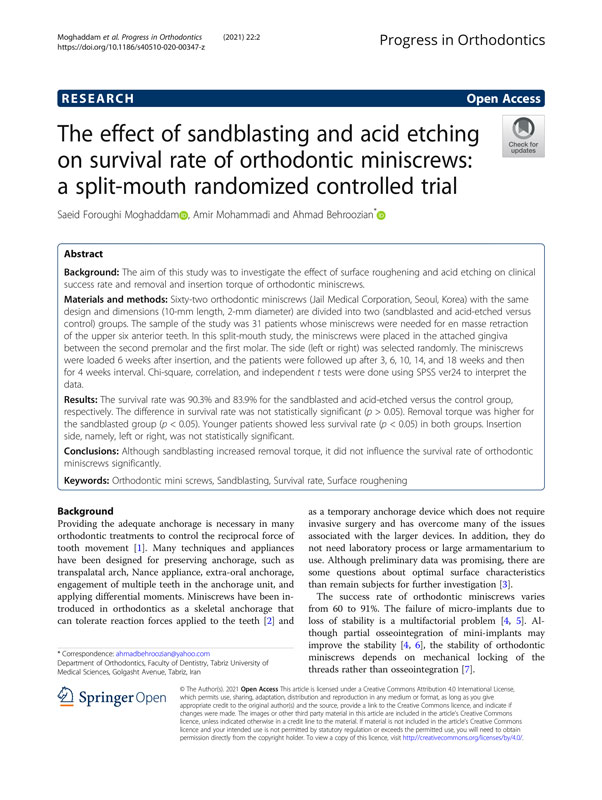این مقاله در مجله معتبر پیشرفتهای ارتودنسی (Progress in Orthodontics) در کشور آلمان به چاپ رسیده است. در این روش استفاده از یک روش برای افزایش دوام مینی اسکروهای ارتودنسی مورد بررسی قرار گرفته است.
لازم به ذکر است که مینی اسکروها یا مینی ایمپلنتهای ارتودنسی از ابزار نوین ارتودنسی هستند که توانسته اند ارتودنسی نوین را متحول کنند.
این مقاله به زبان انگلیسی منتشر شده است و برای دریافت آن میتوانید از لینک زیر استفاده کنید.
Abstract
Background
The aim of this study was to investigate the effect of surface roughening and acid etching on clinical success rate and removal and insertion torque of orthodontic miniscrews.
Materials and methods
Sixty-two orthodontic miniscrews (Jail Medical Corporation, Seoul, Korea) with the same design and dimensions (10-mm length, 2-mm diameter) are divided into two (sandblasted and acid-etched versus control) groups. The sample of the study was 31 patients whose miniscrews were needed for en masse retraction of the upper six anterior teeth. In this split-mouth study, the miniscrews were placed in the attached gingiva between the second premolar and the first molar. The side (left or right) was selected randomly. The miniscrews were loaded 6 weeks after insertion, and the patients were followed up after 3, 6, 10, 14, and 18 weeks and then for 4 weeks interval. Chi-square, correlation, and independent t tests were done using SPSS ver24 to interpret the data.
Results
The survival rate was 90.3% and 83.9% for the sandblasted and acid-etched versus the control group, respectively. The difference in survival rate was not statistically significant (p > 0.05). Removal torque was higher for the sandblasted group (p < 0.05). Younger patients showed less survival rate (p < 0.05) in both groups. Insertion side, namely, left or right, was not statistically significant.
Conclusions
Although sandblasting increased removal torque, it did not influence the survival rate of orthodontic miniscrews significantly.





